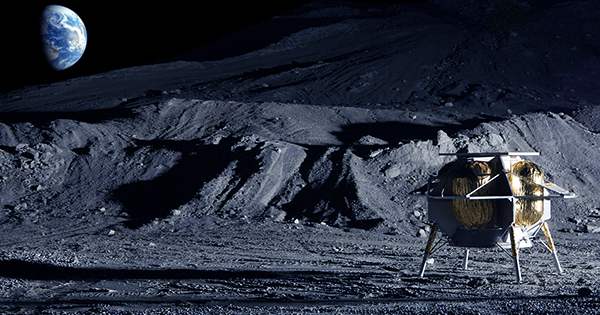Buzz Aldrin characterized the Moon as “magnificent desolation,” but scientists have discovered that there is much more to it than meets the eye. Researchers have discovered water ice in cold traps and many other chemicals in its soil, including oxygen, in recent years, which might be valuable in the human exploration of our natural satellite. Researchers have now proved that carbon dioxide cold traps exist on the Moon as well. They are in the same frigid traps as the water ice that surrounds the Moon’s the South Pole. There are craters in that region that never see the Sun, resulting in temperatures so low that water and carbon dioxide remain frozen.
“Carbon, after water, is arguably the most valuable resource on the Moon. It may be used to manufacture rocket fuel, as well as biomaterials and steel. If we have to bring carbon or fuel from Earth, the expense of maintaining our presence rises. In a statement, lead author Norbert Schorghofer of the Planetary Science Institute stated, “it’s part of ‘living off the ground,’ or in-situ resource usage.”
Because of the traps, carbon dioxide in solid form can persist in those permanently shadowed craters. Although carbon dioxide has been seen on the Moon before, the research has yet to demonstrate that it is present in those traps.
“The existence of carbon dioxide cold traps on the Moon, which could host high concentrations of solid carbon dioxide, is established by extensive and improved analysis of 11 years of orbital surface temperature measurements by the Diviner Lunar Radiometer Experiment onboard NASA’s Lunar Reconnaissance Orbiter,” Schorghofer said.
“Our research has proven the existence of carbon dioxide cold traps, where solid carbon dioxide should have collected according to theory.” Our research does not prove that carbon dioxide is present in these locations, but it is a plausible assumption given that carbon dioxide was identified in the LCROSS (NASA’s Lunar Crater Observation and Sensing Satellite) impact plume in 2009.”
Following spacesuit delays and Bezos’ lawsuit against NASA, NASA’s Artemis program envisions a human return to the Moon around 2025, while the China National Space Administration likewise anticipates human lunar exploration by the end of this decade. Space organizations from all around the globe are looking at the southern area of the Moon as a possible location for permanent outposts. In such initiatives, the availability of resources such as water and carbon dioxide would be critical.















